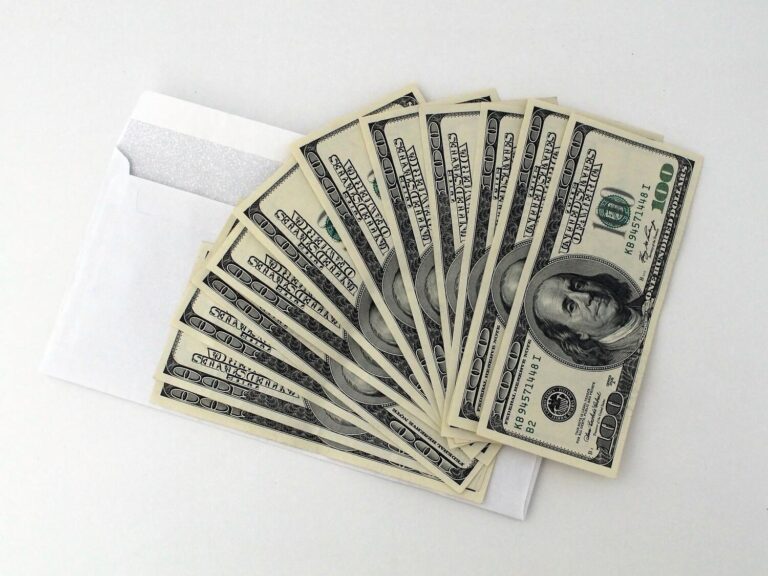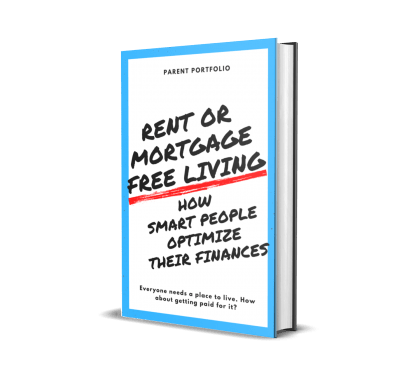21 Effortless Budgeting Tips for Peaceful Money Management

Have you wanted to manage your money better but didn’t know how to start? I know that I can do better for us, especially our kids, so they learn good habits. I know I am not alone.
Ultimately, our goal should be to reduce costs, spend smarter, save more for investing in what we value. Or to keep for an emergency fund in the event you work for the federal government and there is a government shutdown.
Understanding your monthly costs by creating a simple budget to keep track of your spending needs is prudent and may help you eliminate or reduce some areas. A budget is the most basic of financial planning tools and gives us a start to saving money in the future.
Despite improved GDP growth in 3Q2020, economic conditions remain uncertain. Unemployment is still high as we social distance to combat the pandemic. The financial crisis of 2008-2009 lingered for years afterward.
Financial Statistics
Yet, 63% of Americans live paycheck-to-paycheck since the COVID outbreak, according to an October 2020 survey.
One in five (18%) workers making $100,000 or more are living paycheck to paycheck in a February 2020 study.
The Federal Reserve found that 37% of adults could not cover a $400 emergency expense in 2019.
Statistics like these are hard to absorb and not easily reversible.
American Psychological Association 2017 study reported 62% of Americans are financially stressed. Anxiety and stress can lead to serious health issues and workplace absenteeism, furthering financial insecurities.
We Spend and Borrow Too Much
We are a consumption-oriented society, relying on too much borrowing. Consumer spending accounts for more than two-thirds of our gross domestic growth. Household debt climbed to $14.3 trillion in the first three months of 2020. Only credit card debt is lower, but that may be because of the pandemic and not getting out regularly.
However, most of us spend too much. I try to reign in our spending and teach our children good financial habits.
True Story To Share
When my daughter, Alex, was in a toddler program, I had bought her inexpensive suede boots, knowing that it was just a matter of time before her feet would grow and she would need a new pair. Soon after she had her new boots, Alex came home with my husband, crying about how she had the “wrong” boots and threw them in a corner.
I was a bit startled, but I ran to get a Sharpie and wrote“U-G-G” on the back of each boot, and I showed it to Alex. She hugged me and called me a genius! I rocked!
As our kids have grown, so have their needs and wants, and they often can’t tell the difference between the two. I grew up in a modest home, and a budget was a must for us.
Early in our marriage, blessed with my successful career on Wall Street accompanied by a 24 by 7 work schedule, financial planning attempts often took a backseat. We never had a budget.
As our family grew, so did our spending and our need for a budget. I have kept better track of our costs so we can cut down spending. For the record, my husband, Craig, is a more impulsive shopper, which often causes some tension.
Why Aren’t Americans Budgeting More?
According to US Bank, 41% of Americans in 2016 say they use a budget, up from 32% in 2013. There are terrific budget resources: apps, available worksheets to use. Personal finance legends like Dave Ramsey, and Suze Orman urging people for years to work on a budget, why aren’t more people engaged in budgeting?
There are many reasons people like us have not prepared a budget: fear, family arguments, too much work, and it won’t work. The list can go on. I know these excuses well. By creating a budget, you may have more control over how to reduce spending, and put more money towards saving.
Begin A Budget To Accomplish Your Financial Goals
The list of reasons for preparing a simple budget outweighs the plan for not starting one. You need a place to understand what you are spending and saving to accomplish your financial goals.
In its simplest form:
Total household aftertax monthly income plus other income sources less total expenses= +/-
Before we build a simple worksheet, try to understand your significant categories as a percentage of monthly aftertax income or take-home pay plus other income rather than monthly gross income which is not the real place to start.
There are great guidelines from Dave Ramsey, Every Dollar, Credit Counseling Society, and others. You can also take a look at actual percentages from US Bureau of Labor Statistics Consumer Expenditures Survey in 2017 shows major expense categories as a percentage of the pretax income of $73,573 for median households in the US so you can compare your household expenditures.
Keep in mind that the percentages on the BLS table are lower than ours. I recommend you use aftertax income, not pretax income. It should be noted that net incomes and expenses may vary in different cities than yours.
Monthly After-tax Income or Net Income
What you earn is the money you take home every month after taxes.
Besides your salary or wages, other types of income may include:
- sales commissions and bonuses, rental income from property you may own;
- income from a second job or passive income;
- dividend or interest income from investments or loans made to others;
- pension, retirement, and profit-sharing income; social security,
- public assistance from the state or federal you may be collecting;
- alimony or child support; and
- tax refunds, royalties, and capital gains; some professionals and college students may receive grants and scholarships.
Your monthly net income should only include that income that is steady and predictable streams rather than one-time events.
Monthly Costs
Deduct monthly expenses from your monthly net income.
Except for savings, the following categories are mostly expenses deducted from your net income—separate expenses into two groups: fixed and variable costs.
Household fixed costs
Fixed costs are usually periodic, predictable, and often contractual. They are primarily inflexible payments like rent, mortgage, car loans, insurance. You can reduce these amounts through refinancing or negotiating rent. You may have to change apartments as your rent is usually set at monthly payments.
Household variable costs
Variable costs are more flexible and often associated with personal and discretionary spending such as furniture and furnishings, entertainment, vacations, medical, education, and personal care.
Savings
Pay yourself first with any savings by putting some dollars into a 401K plan. Better yet, automate amounts via direct deposit from your paycheck. You can also have some flexibility if you can reduce monthly expenses. Saving is an important part of your lives and it is recommended that 5%-10% of net income goes to savings. The St. Louis Federal Reserve Bank reports our savings rate at 3.8%. Target a 10% savings goal.
Housing
Shelter or housing is the largest cost factor for the average person. These costs are mortgage costs or rent, insurance, property taxes, furniture. Your goal for housing as a percentage should be between 25%-35% of your after-tax income.
Do you own your home or rent? If you have your own home, your monthly mortgage payments could be a sizable part of this category. Look for mortgage refinancing opportunities when interest rates decline. Rates are relatively low but have come up from the lowest historical rate levels. We were able to reduce our monthly mortgage costs by taking advantage of lower rates.
Food
Like shelter, food is our most basic living needs and should account for 10% of our after-tax income. This category has groceries, baked goods, and personal care items. We all shop for groceries differently, but there are a lot of opportunities to shop wisely. More than ever, there is competition from Amazon and Walmart. I have been buying in bulk, outside of New York City, and eating out far less frequently.
Transportation
Transportation should be about 10%-15% of your after-tax income, depending on your mode of getting around to work. This category includes bus, train, taxi, UBER, parking, car insurance, the bridge passes, and maintenance. These costs can vary on where you live, work, and the availability of good public transportation.
Utilities
Utilities amount to 5%-10% of net income and include electric, water, gas, phone, cellphone, cable, and internet. There will be more competition with alternative energy. This category should hopefully result in reduced costs for at least some of these items.
Clothing
Clothing for your family members should amount to 3%-5% of net income. It varies based on the size and age of your family. For us, it was more comfortable when I could mark my daughter’s cheap boots with a Sharpie.
Medical and Healthcare
Medical should be about 3% of net income and includes healthcare premiums, specialists, and over the counter prescriptions. This is can be an expensive area for many families.
What We Owe
Debt Payments outside of mortgage payments can be a tremendous stress factor and needs to be controlled to the lower end of 5%-15% of net income. Here, we include credit card payments, car payments (unless you put the latter into Transportation), student loans, and installment loans.
The higher the percentage of net income these costs command, the lower the potential savings.
Discretionary Spending
Personal and Discretionary are costs that should be 5%-10% of net income.
It includes entertainment, recreation, education, gym dues, eating out, gaming, haircuts, hobbies, education, tobacco/alcohol, and travel, which could be an annual family trip. The latter should be on your monthly table. This category could include gifts to family and friends and charity.
Personal and Discretionary items are diverse, but we need to be fair to ourselves, trying to stay healthy, active, and happy.
Total Monthly Expense Categories Above.
Your total monthly net income $___________
Minus Total monthly expenses $___________
Total Savings/Deficit $___________
Just Do It and Share With Your Family
Your budget needs to suit you and your family. You may want to separate spending into different groups or combine them. Being specific may better help you identify areas where you can reduce costs. Eliminate Weight Watchers monthly membership or streaming subscriptions you forgot about or magazines you no longer have an interest or time for.
In Career Builder’s study, those surveyed, when asked what they “would absolutely not give up” cited the following:
- 54% Internet connections
- 53% mobile devices
- 48% driving
- 37% pets
- 21% cable
- 19% going out to eat
Set up An Emergency Fund For Liquidity’s Sake
Having a good idea of your most important monthly expenses should lead you to establish your emergency fund.
An emergency fund is what it says, cash funds for emergencies put aside in an account separate from your savings account. While you can’t predict why you may need such a fund—that is why it is called an emergency fund—many of us have experienced the loss of jobs, family illness not covered fully by healthcare.
It is prudent to do this when you are facing a critical time. Having enough liquidity is vital. By liquidity, I mean having cash on hand without selling assets at a material loss in value.
Build An Cushion
If you don’t have an emergency fund yet, I recommend you start to put this money aside to cover the essential costs you will have to pay no matter what your circumstances are. Expenses such as food, mortgage, rent, utilities, medical, car, and pets require such a fund.
You need to save at least six months of payments, but if you can manage saving eight months, that’s great. Remember, this fund should be liquid and readily accessible, but that doesn’t mean it couldn’t be in cash-equivalent money market securities.
Final Thoughts
Preparing a budget is a means to an end. It can provide discipline to help achieve financial goals. We only need to be reminded that many people remain out of work now or the more than 10% unemployment rate at the peak of the 2008-2009 financial crisis.
While you will get unemployment benefits from the government, it won’t be nearly enough money to pay the required outlays for your basic needs. Getting your finances in good shape by understanding where you spend and save reduces stress.






